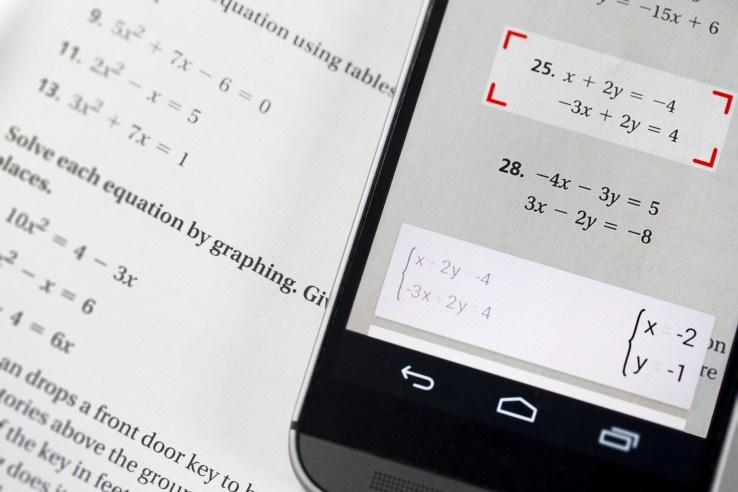
PhotoMath is a nifty little app. You point your phone camera at a math equation, and it will give you the answer and show you all the steps to solve this particular equation. Following its huge success in the App Store, the app is coming to Android.
When I first played with PhotoMath before the team took the stage in our Battlefield competition at Disrupt London, I was impressed by its design and overall user experience. Solving a math equation with a computer is nothing new — WolframAlpha has been doing that for years. But typing an equation inside WolframAlpha’s app is a painful process. With PhotoMath, you point, you shoot and you’re done.
And now, in addition to coming to Android, the app now supports quadratic equations, inequalities and more. The app is faster and the solution screen has been revamped as well.
What I didn’t expect is that so many people would find it useful. In just 24 hours, the app rocketed to the top of the App Store, and people attending Disrupt London couldn’t stop talking about it.
MicroBlink, the startup behind PhotoMath, is a text recognition technology company. The company worked a lot on accuracy and speed so that scanning text only takes you seconds. PhotoMath is a great way to showcase its real-time text recognition engine.
The app has accumulated 11 million downloads on iOS and Windows Phone, and people are still using it. In January alone, it was used to solve 8 million math problems. And now, it is available on Android. It is still free and should resonate well with high school kids who have a cheap Android phone.
Comments
Post a Comment